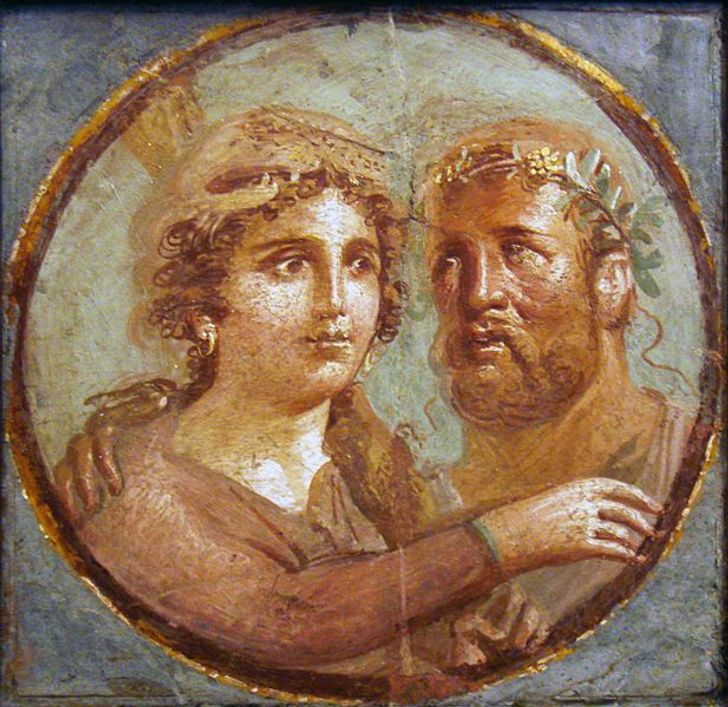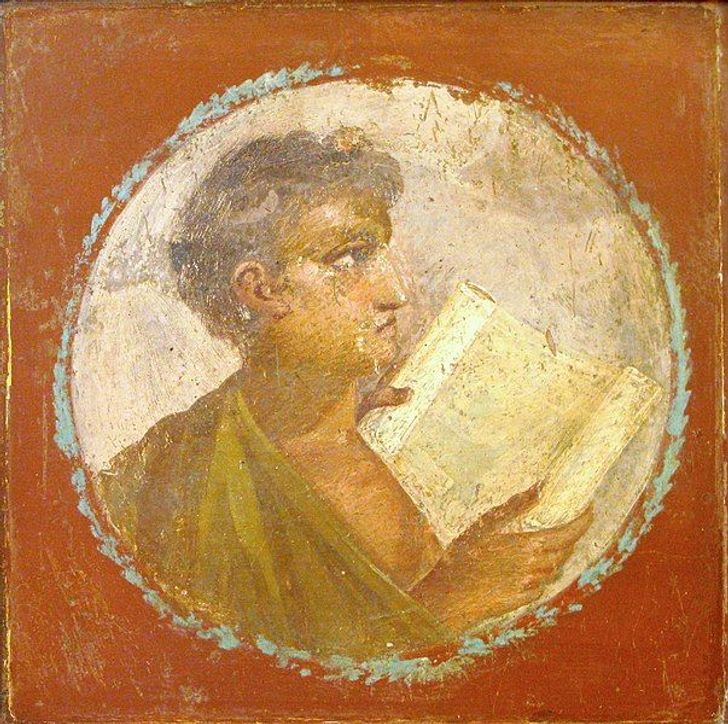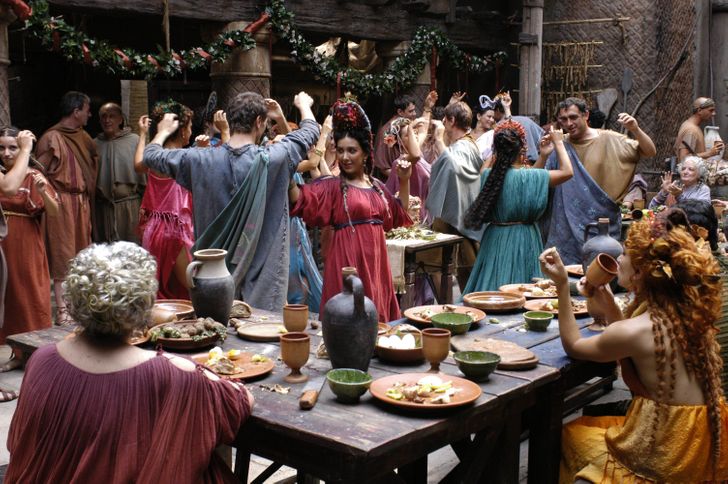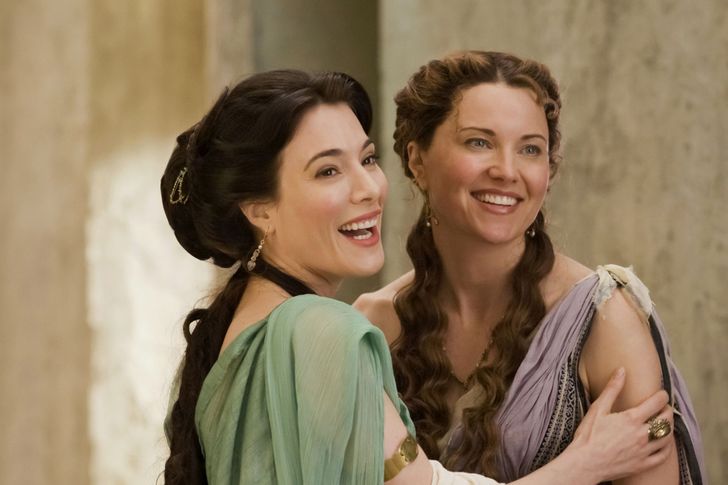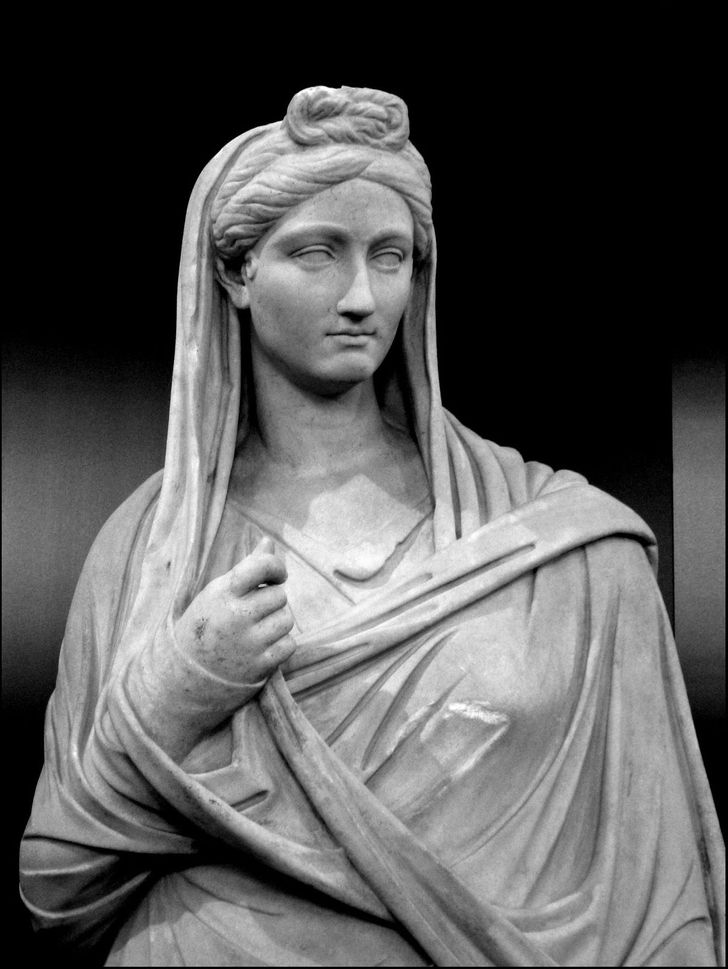meaning if we were in ancient rome..most of us girls would be married -_-
20+ Facts About Ancient Romans That Sound Wild Today
When we think of Ancient Rome, we imagine the amazing gladiator fights, big feasts, and independent women gossiping behind men’s backs. But are any of these things true or are they all fake?
We at Bright Side decided to dive deep into Ancient Roman times and find out what the Romans were really like, how they worked, how they rested, and how much different they were from us.
- A father had full power over the whole family members: he could sell his own children into slavery and make them get married or divorced. Even adult sons with their own households were not considered to be the fathers of their own families as long as their fathers were alive.
- Even when a woman got married, her father was the main person in her life. Her husband had no legal power over her, which is why women were independent of their husbands unlike the women in many other ancient civilizations.
- Even though women in Ancient Rome were citizens, they were not able to vote or be in political positions. But they were allowed to do business. Noblewomen owned and managed shipping corporations, brick factories, and helped their husbands. It is interesting that the laws punishing women for cheating in their marriage didn’t punish the women that had a business.
- Noblewomen would get married at a very early age, at around 12. And men would get married at 25 on average. During the reign of Augustus, marriage and having children were encouraged and young people that weren’t married could be punished.
-
Marriages were some sort of a business deal. A father would choose the husbands and wives for his children, trying to create a politically and economically profitable union.
-
To make a marriage, no documents needed to be signed. A ceremony was believed to be legal if there were 10 witnesses. After that, people would have a big feast and a fun celebration with flute players and anyone could join in on this celebration.
-
Women were supposed to be faithful to their husbands, but married men often had lovers. Wives couldn’t do anything about it because, in that society, it was believed to be normal and even expected from a man.
-
Either person in the marriage could initiate divorce, but there had to be a good reason for it: the infertility of a wife, a husband’s violence, cheating.
-
Apartment buildings in Ancient Rome were a bright example of social injustice. The lower floors were occupied by rich people: the rooms were big, there was access to water and utilities, and the rent was paid yearly. The upper floors were for poor people, the whole family might live in one room with no access to water and utilities. The rooms were cold in the winters and hot in the summers. And the rent was paid daily.
-
Everyone knows that Romans created the first sewers, but they also had some sort of a flushing system in their toilets: under the seats, there were canals with water that was used to remove the waste.
-
The citizens that could afford it, would send their sons and daughters to paid schools. The first step of this school was for children older than 7 who were taught to read, write, and count. At the age of 12, they started a new level of education where they studied Greek and Roman literature, and at the age of 16, the wealthiest students went to the rhetoric schools. Because education was pretty expensive, many students stopped after the first level.
-
Teachers rarely had their own classrooms, so they had to rent places, and many teachers would give classes in public places, even though they were noisy and uncomfortable because of the weather.
-
Most Romans would eat from 4 PM until 6 PM. In the morning and for lunch, they had some light snacks, sometimes just bread. Poor people would eat the grain that rich Romans would give to their cattle. A person with an average income would eat bread, vegetables, olive oil, and cereal every day. Rich people could afford meat and spices.
-
There’s a popular misconception that Romans didn’t know when to stop eating, so the places where they ate were next to vomitoriums — places where they could empty their stomachs and go back to eating. But in fact, vomitoriums were passages situated below or behind a tier of seats in an amphitheater or a stadium.
-
Most Romans worked 6 hours a day — from dawn till midday. The rest of the day they would spend on resting: rich and poor people visited the gladiator fights, chariot races, theaters, and saunas.
-
In Rome, emperors that built saunas were really popular. The Romans loved saunas and used them as places to rest, talk to someone, and even negotiate business. Usually, they went to the sauna once or twice a week, the price was pretty low, and it was free on holidays. A typical sauna had 3 rooms — warm, hot, and cool with pools and a place for physical exercise.
- Many people believe that in a gladiator fight, only 1 of 2 gladiators would survive. But in fact, according to a historian, this violence was actually out of the ordinary. Gladiators were an expensive investment and most owners didn’t want to lose them. Instead of fighting other people and lions, they would often fight wild hogs.
- Thanks to movies, we think that the “thumbs up” gesture meant “life” for a gladiator. But many scientists think that despite the direction, a thumb always meant a finishing sword and a tragic end for a fighter. And a hidden thumb meant “life.”
- The sweat of gladiators in Ancient Rome was a product that was very in demand. Rich women were ready to pay a good price for the sweat and dirt from the bodies of famous gladiators, to use them as face cream or add them to their perfumes.
- At the beginning, togas were worn by both sexes, but later only men could wear them. Women and slaves were prohibited from wearing togas. There were different kinds of togas that helped identify someone’s social status. In everyday life, Romans would wear tunics made of linen and wool. A short tunic could be seen on a slave or someone from a low social status.
- Respected women would wear ankle-length tunics with long sleeves. And when they went outside, they would wear pallas (similar to a toga, but with sleeves) to protect them from bad weather and curious eyes. If a Roman woman was guilty of cheating, she would be forced to wear a specific type of toga.
- The perfect woman’s body was wide hips and small breasts. Young girls often wore a tight belt made of soft skin to prevent the growth of their breasts.
-
Because there were no specialized facilities that would teach people medicine and anyone could call themselves a healer, most doctors were believed to be scammers. But the surgeons of the Roman armies were deeply respected because they could patch the soldiers up on the battlefield. They invented bandages made of spiderweb, vinegar, and honey — a combination that helped warriors to heal faster.
-
In Ancient Rome, people would treat acne in very unusual ways: they used crocodile meat, took baths with oil and cheese, and even rubbed their faces with a cloth while watching a falling star.
-
Ancient Romans invented malls. In the times of Trajan, a set of buildings was constructed that had more than 150 shops where people could buy food, spices, clothes, and shoes.
-
In Ancient Rome, there was a urine disposal tax: urine was believed to be valuable because it was used to do the laundry and whiten teeth.
Which fact from our compilation impressed you the most? Would you like to go to Ancient Rome?
Comments
omg, thankfully im living in the 21st century in the middle east thankful, grateful, fortunateeeeeeeeeeeeeeeeeeeeeee(is a song lol i made it)
Related Reads
My MIL Sabotaged My Wedding Dress but I Rewrote Her Family History

17 Awkward Dates That Quickly Spiraled Out of Control

12 People Who Were Even More Terrified After Discovering the TRUE Causes of Eerie Events

12 Unsolved Mysteries That Haunt People’s Minds Everyday

10+ Families Whose Stories Could Dominate Google Trends

21 Real Stories From Families Anyone Would Like to Live in at Least for a Day

12 Stories That Prove Family Love Can Move Mountains

12 Children Whose Creepy Revelations Will Unsettle Even the Bravest Adults

15 Stories About First Love That Had an Unexpected Twist Years Later

I Refuse to Babysit My 3 Stepchildren for Free

15 Stories Whose End Got Twisted For Sure

10 People Who Thought Renovating Would Be Fun—So Life Gave Them a Reality Check

